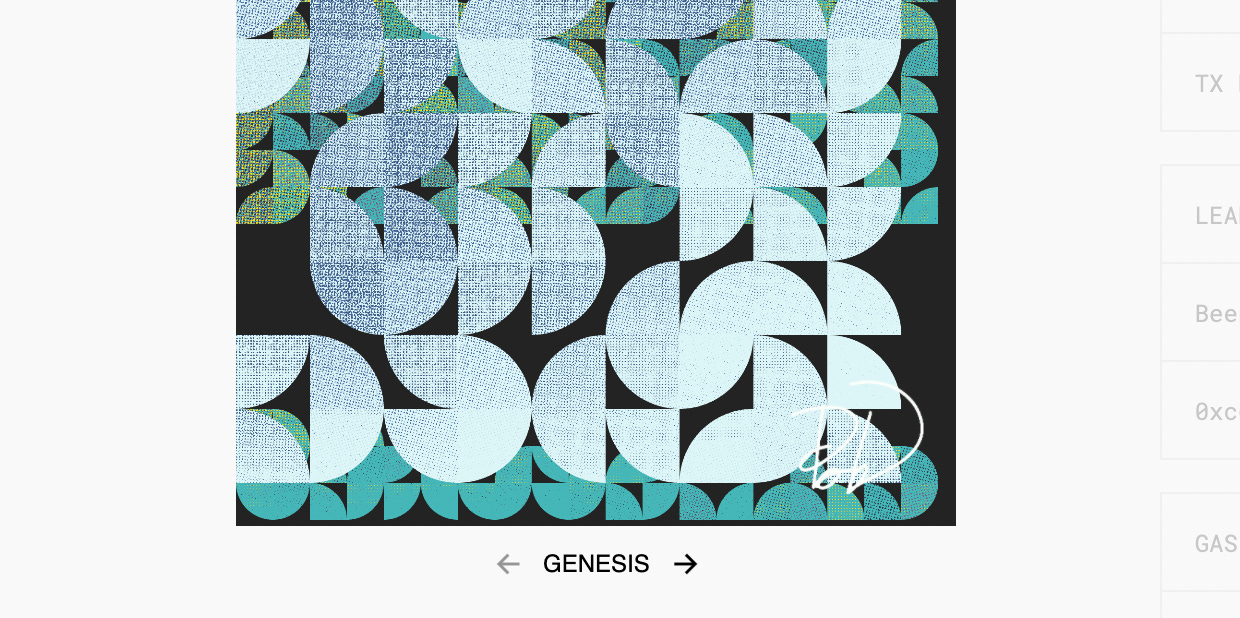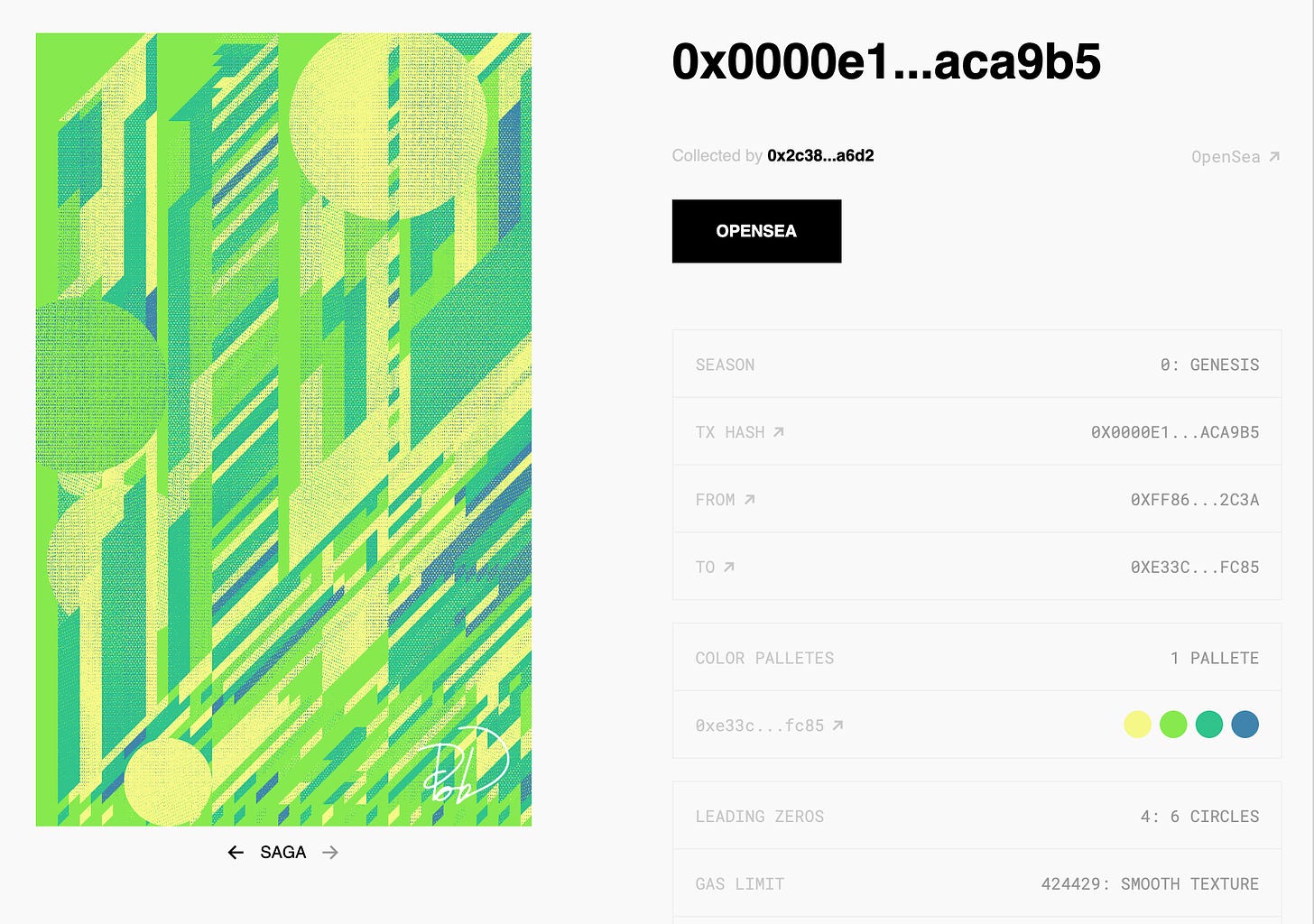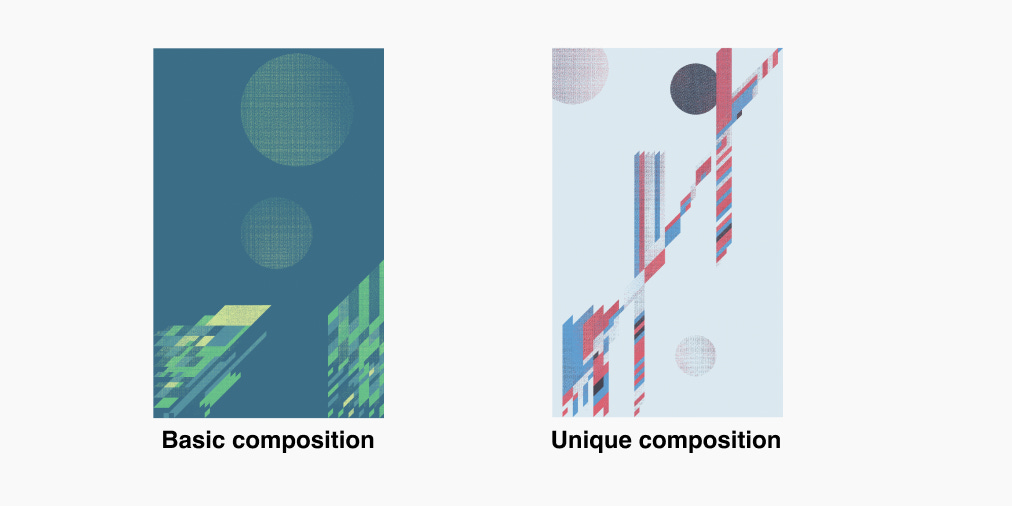For the uninitiated, $HASH is a project to capture our ETH’s history in the form of generative art NFTs. Each NFT derives its visual attributes from the transaction itself.
SAGA, our second season of $HASH, improves upon the design of our previous visual experience employed in GENESIS. For GENESIS holders, you will find the experience familiar but different and in many ways.
To learn more about how $HASH draws the artworks from the txn, read this.
Before going further, GENESIS holders, you can enjoy the new visuals of SAGA by going to your $HASH collection on hash.pob.studio.


The same $HASH NFT, but experiencing its visuals in BOTH SAGA and GENESIS.
Through this blog, I will break down the nuances of the new algorithm, and its implied rarities.

The “nutritional label” of SAGA
Color palettes
As SAGA is largely designed to celebrate “personal history” we wanted an algorithm that put weight to the addresses that was sending and receiving the txn.
Unlike GENESIS, where we employed a number of colors and color palettes, dependent to number of leading zeros in txn hash, SAGA uses defined palettes of 4 colors, some correlating to the brand color of the addresses, some selected via a pseudo random function.

SAGA’s color palette are determined from the `to` address field in a txn. This means all txns sent to uniswap will have the signature pink in the artwork, txns with the 0x protocol are green and black, compound finance with rich greens. Hopefully this really allows for the celebration of the txn and the parties involved with it. This interplays deeply to how we want the visual experience itself to suggest the beauty that lies within the txn.
Num Circles
In season 0: GENESIS, we introduced a novel rarity mechanic that payed homage to POW consensus via the leadings zeros of a txn hash. We continue this celebration via a new visual attribute: the number of circles drawn in the artwork. All artworks will default to have two circles drawn, for each leading zero a new circle will be added.
// 2 circles
0x5FC0F...
// 3 circles
0x0AB15...
// 6 circles
0x0000...

A txn minted in season 0, rendered in SAGA
These circles will not necessarily be visually prioritized, possibly overlapped by other forms. This is left to the whims of the algorithm and how it creates the artworks.
Texture
Like before, the ‘texture’ you see on the artwork is largely kept the same, with some minor tuning for the new visual look.
const texture = gasUsed / gasLimit;

Complexity
Similar to GENESIS, the txn nonce controls compositional complexity. The higher the nonce, the more likely the artwork will be unique and unlike what we have seen before. Higher txn nonce doesn’t guarantee uniqueness, more so, it guarantees that it is more likely to happen.
SAGA’s algorithm has been designed to be more unique than before, so this trait now is more subjective than ever.

Shading
This is a new attribute, one that controls the complexity of the texture seen on the artworks. Higher ‘shading’ values would mean the likelihood of more gradients and interesting gradient effects to occur. The `value` transferred by the txn controls this attribute. This attribute is extremely subtle, but in some artworks, a defining aspect of its beauty.

Circle Diversity
A new attribute specific to SAGA, circle diversity is controlled by the gas price. The higher the gas price, the more likely the chance for larger and smaller circles in the piece. This attribute, with leading zeros, can result in stunning and 1-in-a-million chances compositions to occur. Hunting for these txns will likely result in some truly stunning pieces.

Woah, a circle in a circle perfectly? That is quite rare!
Like GENESIS, hopefully these attributes, both new and old, will spur collectors to go ‘mine’ for unique artworks that are both historic and rare. Such behavior is the core tenet of $HASH. It has brought so many people together in the celebration of our history. We hope that SAGA does the same and finds new stories untold.
Follow the newsletter to learn more about POB, the thinking behind the project, and what is next on the horizons.